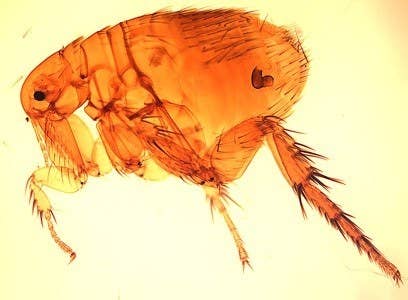
Los Angeles is in the midst of a growing outbreak of flea-borne typhus, and the city's downtown areas and homeless population is being hit especially hard.
It's not uncommon to see clusters of cases each year in the area because flea-borne typhus is endemic in Los Angeles County. However, in recent years, the average number of reported cases has doubled to nearly 60 cases per year. In 2018 alone there have already been 63 cases of typhus in the county, according to the Los Angeles County Department of Public Health.
Cases have been identified in downtown Los Angeles, Pasadena, and Willowbrook.
Typhus refers to a group of infectious diseases caused by Rickettsia bacteria, which can be spread to humans by fleas, ticks, mites (chiggers), and body lice. It's not the same as typhoid fever, a bacterial infection that spreads through contaminated food and water and can be prevented with a vaccine.
Flea-borne typhus, also called endemic or murine typhus, is transmitted to humans when they are bitten by fleas infected with Rickettsia typhi or R. felis. The fleas poop after biting, and people can get sick when the infected flea feces are rubbed into the eyes or cuts or scrapes on the skin. It is not spread from person to person.

Symptoms include a fever, chills, headache, nausea, and a rash and these usually start about two weeks after exposure, according to the CDC.
Most people recover from flea-borne typhus without treatment, but more severe cases may be treated with the antibiotics doxycycline. In rare cases, untreated flea-borne typhus can lead to complications such as organ damage, pneumonia, or even death — though fatalities are uncommon.
Flea-borne typhus symptoms are similar to those from the flu and other viruses — and because typhus is relatively uncommon, it can be easily mistaken for another illness. A diagnosis usually requires laboratory tests, which can detect the presence of typhus or antigens in the body.

The fleas that spread typhus are carried by several types of animals such as rats, opossums, and even cats. In urban areas, the culprit is often rats, which live around trash and accumulated debris.
The homeless population in parts of downtown Los Angeles, such as Skid Row, has been primarily affected in the outbreak. As a result, health officials approved an emergency plan to tackle flea-borne typhus that involves increased pest control and sanitation efforts, such as trash cleanups, in homeless camps.
There is no vaccine to prevent flea-borne typhus, but taking steps to avoid contact with fleas, especially if you live in an area where typhus is endemic, can reduce your risk of becoming infected.
“Typhus infection can be prevented through flea control measures on pets, using insect repellent to avoid flea bites, and clearing areas that can attract wild or stray animals like cats, rats and opossums,” Los Angeles County Health Officer Dr. Muntu Davis said in a statement.
Most cases of flea-borne typhus in the US are reported in California, Texas, and Hawaii, according to the CDC. If you think you may have been exposed to typhus or you are experiencing symptoms, talk to your doctor.
